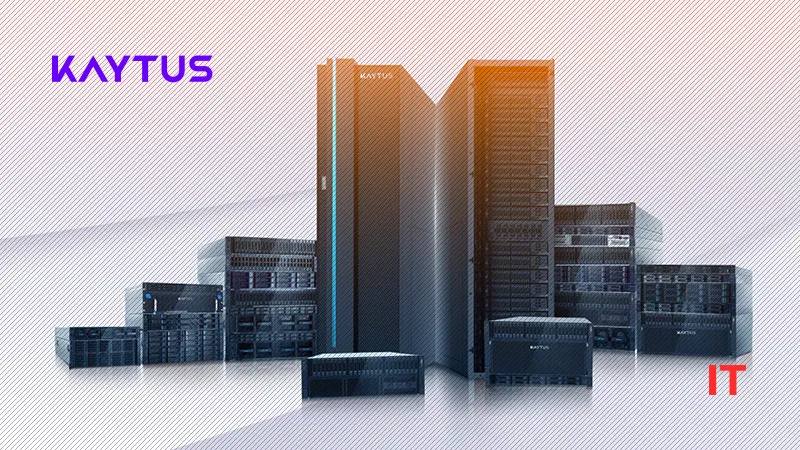KAYTUS, a leading provider of IT infrastructure, launched the KR2280V3, the commercially available server compliant with the CXL 2.0 standard. Housed in a 2U chassis, the KR2280V3 supports front- or mid-mounted CXL 2.0 E3. S modules, offering up to 10 front and 18 rear configuration options.
The KR2280V3 accommodates up to 45 small 2.5-inch drives, 22 large 3.5-inch drives, or 48 of the latest 1TB E3.S SSD modules. It supports AIC CXL memory expansion devices with up to 24 DDR5 memory modules, boosting single-machine memory capacity by 75%. Additionally, 16 8,000MT/s MRDIMM modules enhance memory bandwidth by 25% compared to RDIMMs, enabling superior computational performance and scalability.
Benchmark tests indicate that the KR2280V3, leveraging CXL technology, excels in AI and data-driven workloads. Under sub-100-nanosecond latency conditions, the system’s memory capacity and bandwidth double, resulting in a 76% improvement in BERT model inference performance, a 94% increase in Redis in-memory database throughput, and a 24% enhancement in vector data processing scenarios compared to conventional local memory configurations. With its CXL advanced memory expansion and cutting-edge design, the KR2280V3 sets a new benchmark for AI and data-centric computing.
CXL Technology: Breaking the ‘Memory Wall’
Rapid advancements in cloud computing, artificial intelligence, and high-performance computing have fuelled the evolution of processor capabilities and increased core counts, driving memory systems toward greater capacity and higher bandwidth. In 2017, the average memory per processing core ranged from 3-4GB; by 2021, this figure rose to 8-10GB.
Although overall system memory bandwidth has grown, per-core bandwidth improvements remain constrained due to the increasing number of CPU cores. Concurrently, the exponential growth of AI model parameters has outpaced memory performance advancements, creating a widening performance gap.
CXL technology addresses this challenge by enabling shared, coherent memory access between CPUs and accelerators or memory expansion devices, supporting rack-level memory decoupling. It effectively boosts memory bandwidth, expands memory capacity and enables memory pooling for shared access, enhancing overall system efficiency.
Also Read: Lantronix Acquires DZS’s NetComm Enterprise IoT Portfolio
KAYTUS: Pioneers CXL Technology Deployment
KAYTUS is always committed to continuous innovation and performance optimization. Its V3 server series supports CXL technology on both Intel and AMD platforms, enabling high-speed interconnects and memory pooling. Performance testing of the KR2280V3 with CXL memory demonstrates significant improvements: memory capacity-sensitive workloads achieve higher CPU utilization and concurrency without substantial performance loss, while bandwidth-sensitive tasks benefit from optimized memory tiering for enhanced throughput.
Performance testing indicates that in AI scenarios, integrating local and CXL memory significantly boosts bandwidth and application throughput, accelerating BERT inference speeds by 76%. For in-memory database applications, CXL memory extends database capacity, increasing throughput by 94% compared to traditional non-CXL architectures and by 116% when optimized memory tiering strategies are applied. For vector data applications, balancing local and CXL memory usage improves performance by 24% over standard local memory configurations. This advancement enhances computing efficiency across AI inference, deep learning, and memory-intensive tasks such as genome mapping.
CXL BOX: Unlocking the Memory Resource Pooling Efficiency
As data volumes grow and demand for computational capacity intensifies, memory bandwidth and capacity requirements continue to rise. In response, KAYTUS goes beyond integrating CXL into its products by offering the CXL BOX memory resource pooling solution, designed to meet the needs of users requiring high memory capacity
This solution integrates CXL switching units with JBOM memory pooling to create a multi-host, fine-grained (64GB/module) shared memory resource pool. Specifically designed for cloud computing and distributed storage scenarios, it enhances memory resource utilization while reducing idle memory caused by workload fluctuations.
Source: Businesswire
































